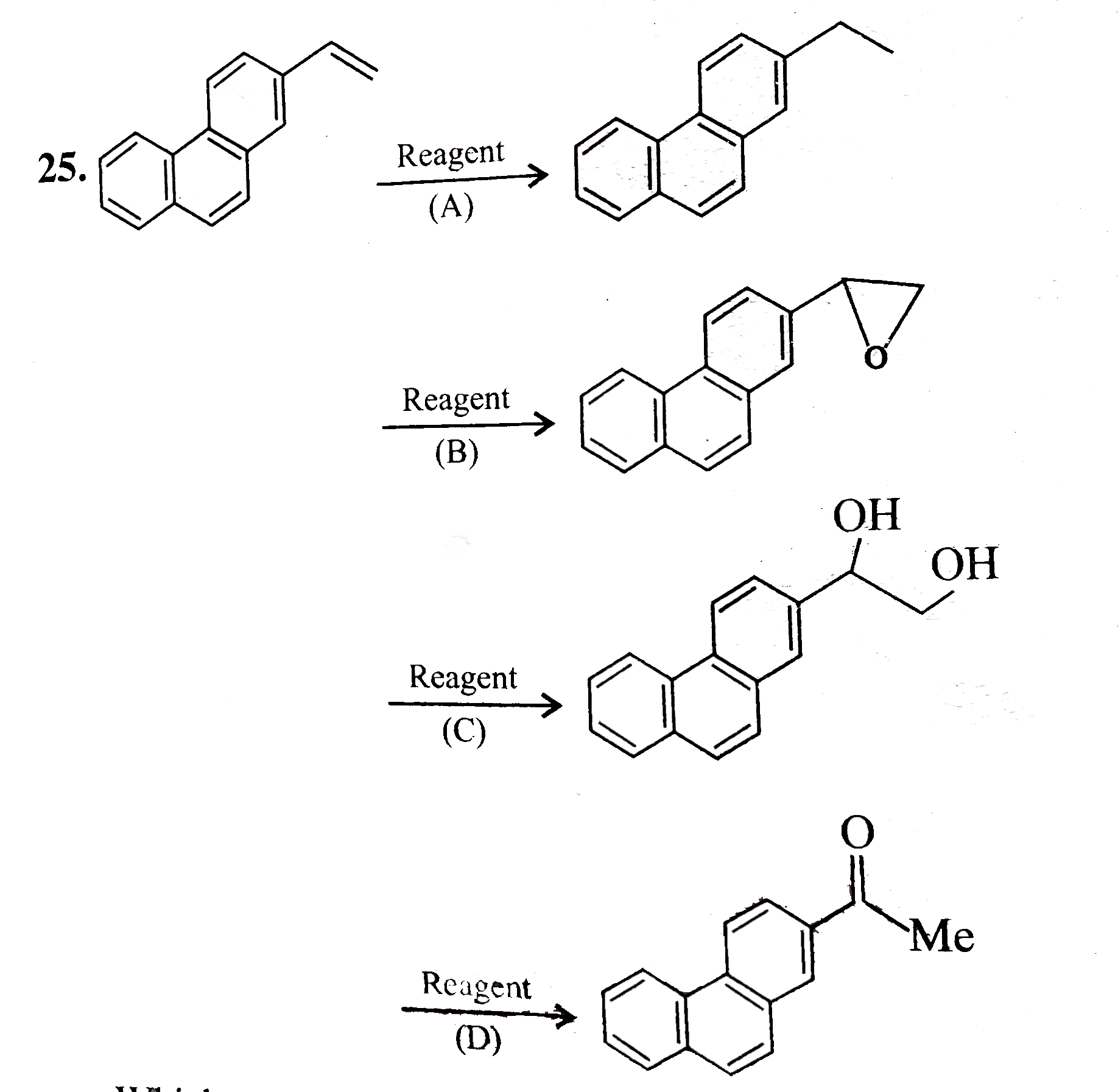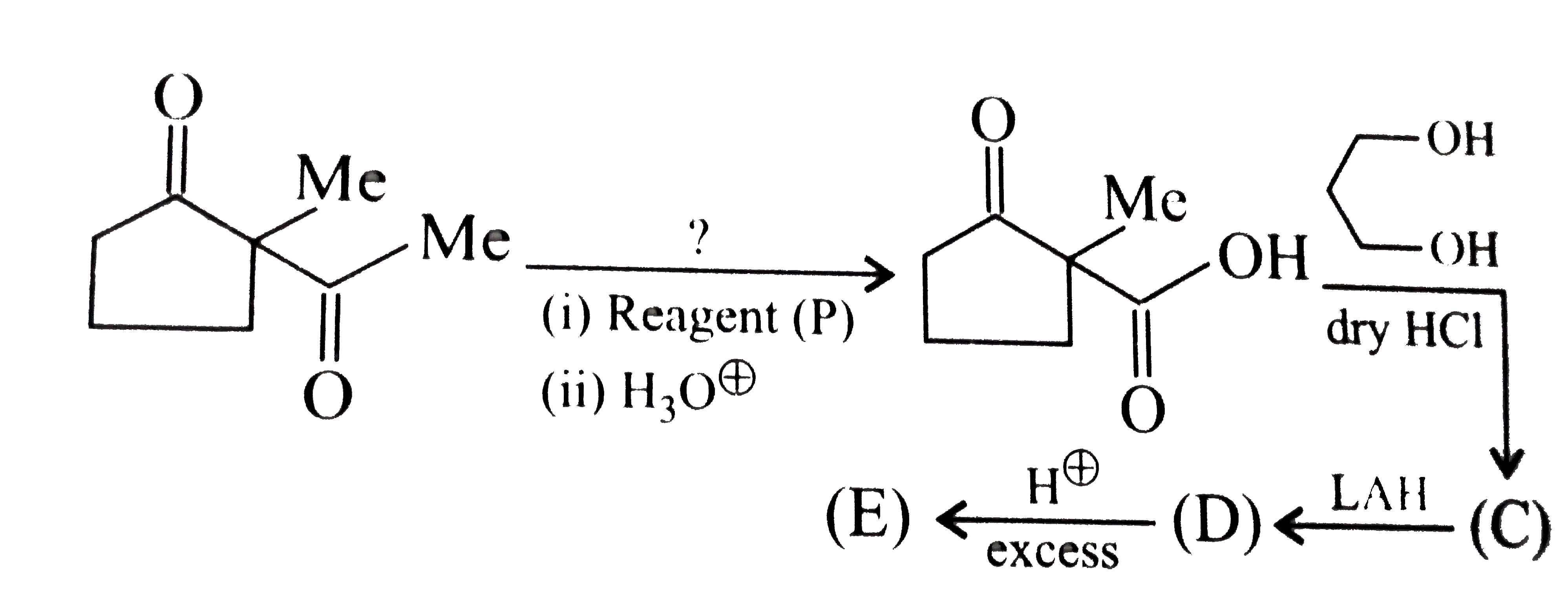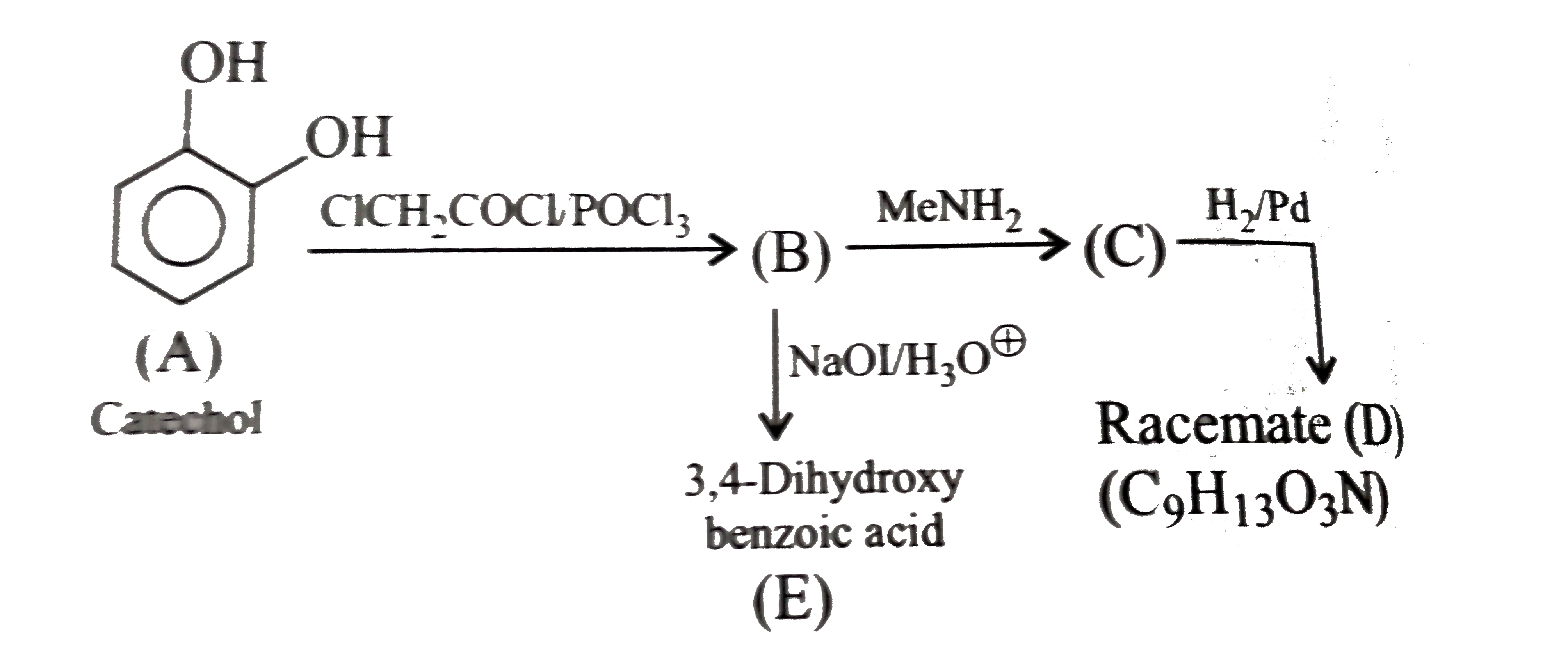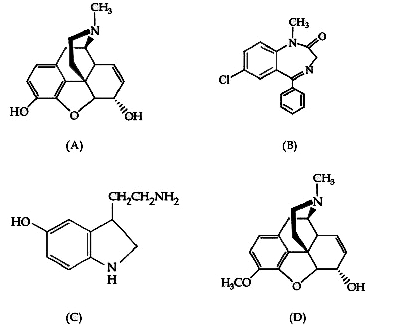Three compounds (A),(B) and (C) are given. 
Which statements are correct about (A),(B), and (C) ?
The rate of catalytic hydrogenation is faster in (A) than in (B) and (C).
The rate of catalytic hydrogenation is faster in (B) than in (C)
(A) has a catalytic ring whose strain on going to less − strained cyclopropane ring is reduced on hydrogenation. Similarly, cyclobutene ring in (B) on hydrogenation is reduced to less − streined cyclobutane ring. But, cyclopropene ring is more strained than cyclobutene ring, so faster hydrogenation is in (A) than in (B).
There is a little change in the rign strain when the cyclohexen ring is reduced.
The correct Answer is:a,b,c,d
The statements (c) and (d) are explanations of (a) and (b)
Topper's Solved these Questions
- BOOK - CENGAGE CHEMISTRYCHAPTER - ALKENES AND ALKADIENESEXERCISE - Single Correct Answer Type62videos
ALKENES AND ALKADIENES
- BOOK - CENGAGE CHEMISTRYCHAPTER - ALKENES AND ALKADIENESEXERCISE - Archives(ASSERTION-REASIOING)4videos
ALKENES AND ALKADIENES
- BOOK - CENGAGE CHEMISTRYCHAPTER - ALKENES AND ALKADIENESEXERCISE - linked Comprehension Type38videos
ALKENES AND ALKADIENES
- BOOK - CENGAGE CHEMISTRYCHAPTER - ALKANES AND CYCLOALKANESEXERCISE - Archives13videos
ALKANES AND CYCLOALKANES
- BOOK - CENGAGE CHEMISTRYCHAPTER - ALKYNESEXERCISE - Exercises (Archives - Analytical and Desriptive Type)4videos
ALKYNES
Similar Questions
Knowledge Check
- Question 1 - Select One or More

Which statements are correct for reagents A, B, C, and D?A(A)(B)(C)(D)a.H2/PtMMPPColdalk.4O2+PdCl2KMnO4+CuCl2+H2OB(A)(B)(C)(D)b.H2/Pd+BaSO4HCO3HHotalk.Dil.H2SO4+quinolineKMnO4+Hg2+C(A)(B)(C)(D)c.Sia2BHPhCO3HOsO4/O2+PdCl2+CH3COOHNaHSO3+CuCl2+H2OD(A)(B)(C)(D)d.BH3+THFMCPBAOsO4/Wacker+CH3COOHH2O2process - Question 2 - Select One

Which of the statement is/are correct about compound (C )?ACompound (C ) is a cyclic ketal with six-membered ring.BCompound (C ) is a cyclic ketal, with five-membered ring.CCyclic ketals are inert to reduction by LAH.DCyclic ketals are hydrolysed in both acidic and basic mediums. - Question 3 - Select One
Which statement are correct about the following compounds ?
 A(I) is not isolable because trans − cyclohexane is too strained.B(II) is isolable because trans − unit can be bridged by six C atoms. Eight− memebered and larger rings can have a trans−substituted (C=C) in the ring.C(III) is not isolable, exocyclic double bonds ( double bond at the bridgeheat ) are unstable because of high strain ( due to ring and double bond joining the two rings ).D(IV) is isolable, although there is a double bond at a bridgehead ( joining two rings) but one of the bridgeheadds has no C atom and bridgeheat C atoms can flatten without ring strain.
A(I) is not isolable because trans − cyclohexane is too strained.B(II) is isolable because trans − unit can be bridged by six C atoms. Eight− memebered and larger rings can have a trans−substituted (C=C) in the ring.C(III) is not isolable, exocyclic double bonds ( double bond at the bridgeheat ) are unstable because of high strain ( due to ring and double bond joining the two rings ).D(IV) is isolable, although there is a double bond at a bridgehead ( joining two rings) but one of the bridgeheadds has no C atom and bridgeheat C atoms can flatten without ring strain.
Which statement is not correct about fullerene C60?
View SolutionThe correct statements about the compounds A,B and C
 View Solution
View Solution
In the formation of (C) from (A) and (B), which statements (s)is/are correct ?View Solution
which statement is wrong about the compound (B) ?View SolutionMatch the following columns
 View Solution
View Solution


